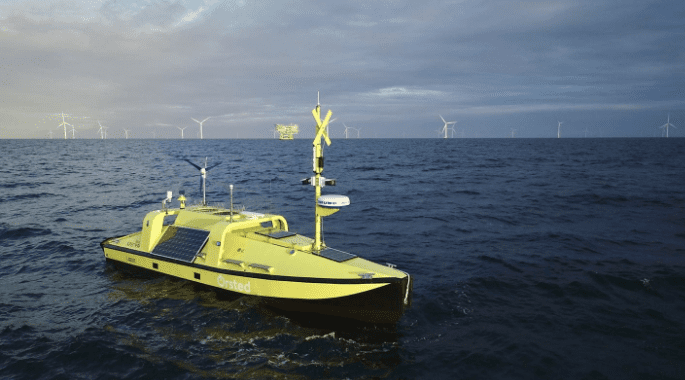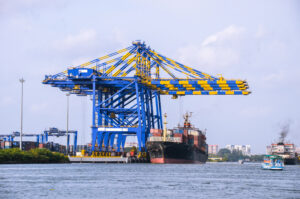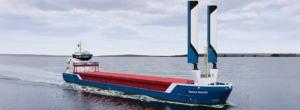
The Danish based and globally working developer of offshore wind farms, has designed and developed the first uncrewed surface vessel (USV) in the industry for offshore met-ocean measurement campaigns.
The measurement data will help lower uncertainties in the expected annual energy production for new offshore wind farms.
Ørsted, who has patented the USV concept, has initiated a serial production based on their successful prototype Hugin USV. The expectation is to produce five new USV’s by the end of 2023.
Hugin USV is designed for continuous operation in the harshest offshore conditions for a year at a time. This USV has a built-in navigation system, which enables it to transit from shore at various degrees of autonomy, and it can be controlled both in line-of-sight or from a beyond-line-of-sight remote control centre.
The Ørsted’s prototype USV is designed as a generic sensor platform and can collect large amounts of data on, among other things, the wind conditions, the state of the seabed, and biological and ecological measurements, all dependent on the sensor instrumentation chosen for a given operation.
The broad range of measurements collected by the USV is essential for Ørsted’s early-phase development activities prior to the construction of new wind farms.
The prototype USV is constructed by the Danish shipbuilder Tuco Marine Group, while the USV control system is delivered by Norwegian company Maritime Robotics AS, and the USV concept as such was invented by Ørsted employees and has been patented.
Ørsted’s USV concept has several advantages over conventional solutions that rely on specialised support vessels to bring measurement equipment to offshore sites, meaning that the Ørsted USV improves safety by removing the risk for offshore technicians, reduces the overall carbon emissions significantly, and increases the operational window as it can operate safely in high sea state conditions.
Another benefit of the USV concept is the significantly lowered costs of conducting offshore measurement campaigns, while providing increased flexibility for Ørsted through internal ownership and operation of the USV’s.
The prototype vessel Hugin USV has been tested in Danish and Norwegian waters and has been operational during hurricane conditions, where it experienced waves up to nine metres in the North Sea. The Hugin USV has also achieved type validation as a floating LiDAR system by the internationally accredited Norwegian classification society ‘Det Norske Veritas’ (DNV), enabling it to be used for commercial operations related to wind farm development.
Video credit: Ørsted


